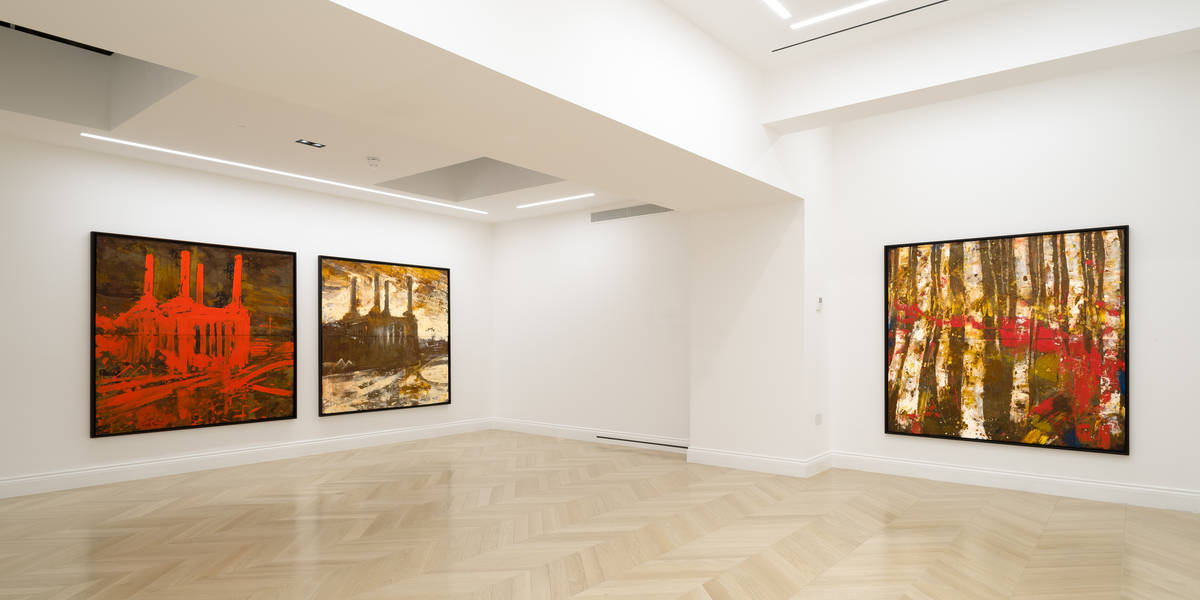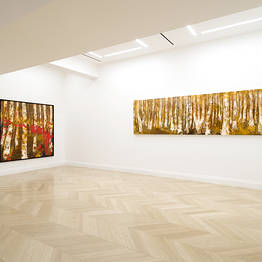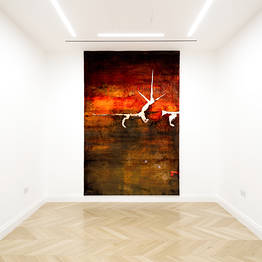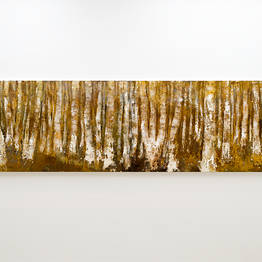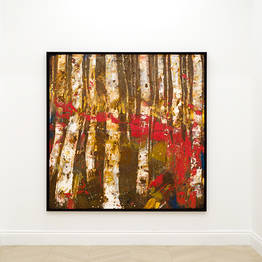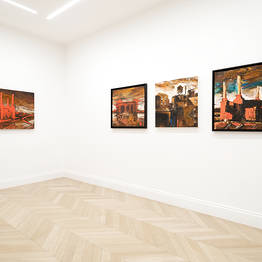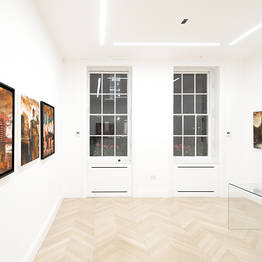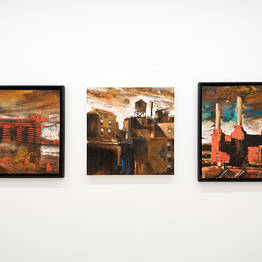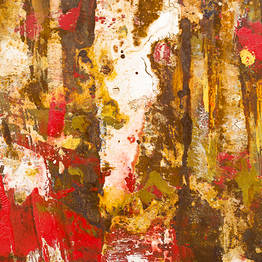Exhibition
Alessandro Busci: Steel Gardens
22nd November - 12th January
Curated by Angelo Crespi
Alessandro Busci's treatment of paint preposes a perfect synthesis, following focused years of apprenticeship, proceeded by renewed ambition for perfecting. Busci’s figuration presents shape that is weathered and unpredictable, utilizing steel that has been encumbered with water and acids to create a patena of corten (weathered steel). Busci then apples a chaotic sense of line that borrows from corten to imply shadow and depth.
Painterly lines often used to be descriptive, become evocative under busci’s technical finesse, of eastern stylistic sensibilities. Furthermore, the colour is tasked with not imitation of reality but to highlight different states of mind, through the corroded oranges and emboldened reds and blues. Each steel picture is developed in the purest programmatic intent of abstraction and without disregarding the effects peculiar to tachisme (to stain).
The subjects depicted in Busci’s image collide the industrial and architectural symbolism of structured and engineered strength, with a romantised vehemence found in natural landscapes, such as mountain tops, intimate birchwood forests, volcanic landscape and tornadoes.
Presently, Busci's work is the kind of art which aspires to informality, with extremely powerful lines, sometimes violent in the gesture, and expressionist tones. A methodology that the Milanese artist has found essential in moving away from the classical figure, measuring himself with the international style whose main results, it is worth mentioning, in auction houses and among the most careful collectors, seem to be the ones leading to a return to painting, putting aside the conceptual art in its roughest and most meaningless modalities.
Busci has been one of the leading figures of the second wave of the so-called “Milanese lab” which, at the end of the 1990s, brought back to the forefront, at least in Italy, the languages of the tradition, painting and sculpture, by re-inventing them after the cold and fashionable period of minimalism and of the most self-referential experimentalism. Busci, having already had the premonition of his future developments, especially in regards to the decision, at the beginning of his career, to use steel as a medium for his paintings, submitted to treatments which could not be controlled completely from a formal viewpoint (even with a long experience), so that his works have always referred more to alchemy, with the usual esoteric side (mysteriosophy) and exoteric (metallurgy), than to the usual and accomplished techniques of art.
On this rough medium, etched by corrosion, Busci has been training and challenging himself, perfecting or thinning out his painting, usually with glossy and super flat varnish, as opposed to the rough and sparkling surfaces, achieving satori like state of self comprehension, that is the enlightenment resulting from the meditator's joyful aptitude and in which the personal and cosmic experience are concentrated, and which allows him, to purposefully express architectural elements and landscapes with lines so openly similar to Japanese calligraphy, a homage to the mastery of the Shodo method.
The western tradition definitely persists and is visible in his works; some traces of symbolism, sometimes it is the nostalgia and loneliness of Hopper's views (specifically in the airplanes parked in distant metaphysical spaces made of dusks or dawns), sometimes it is the architectural reference typical of contemporary painting where the only landscape cherished by the artist is the urban one (the Power Station in London or the San Siro Stadium in Milan), it is often the accumulation of motives that recall the Lombard pre-war naturalism, up to the abstract sublimation when the colour on the rust decreases to its limits.
Busci proves to be a actualized artist who believes that beauty refers to the “well done”, and the “well done” refers to “the precise determination of the things to do”, that is, that awareness in terms of techniques and thoughts that distinguishes the master from the apprentice.
Text by Angelo Crespi
